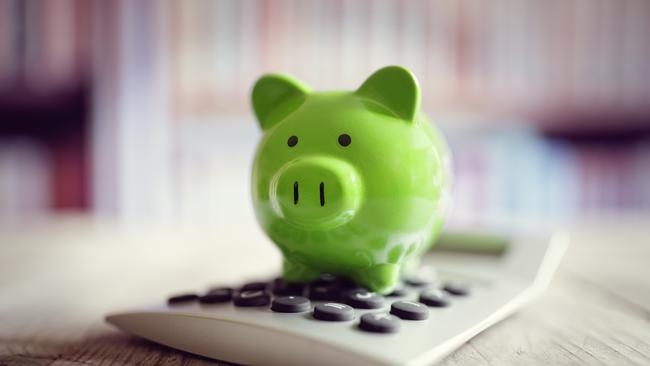Aussies saving more and paying down debts
Holed up in their homes, Australians have been putting more money in the bank and paying down debts.

Australians ploughed more than $15bn into bank deposits in April and paid down debt at a faster rate, bracing for the prospect of a recession sparked by the coronavirus lockdown that has swept the economy.
Latest monthly banking figures from the Australian Prudential Regulatory Authority showed household deposits rose across all four major banks through April, while mortgage loan growth slowed. The rise in deposits came about even as interest rates were slashed, with many transaction accounts paying nothing.
The release of APRA’s household deposit figures coincided with the publication on Friday by the Australian Bureau of Statistics of new data indicating the early release of super scheme has boosted the country’s savings by approximately $5bn.
More than $14bn has been withdrawn from super funds since the federal government implemented the scheme in April.
Under the scheme, superannuation account holders are able to request withdrawals of up to $10,000 in both the current financial year and the 2021 financial year.
The banking regulator’s April data also showed personal credit card debt had fallen compared to the previous month.
Commonwealth Bank experienced the fastest monthly increase in household deposits, recording a $6.7bn rise over the month, or an increase of 2.5 per cent. Westpac added $3.6bn over April, representing an increase in household deposits of 1.7 per cent.
ANZ and NAB had smaller increases, adding $2.5bn and $2.4bn respectively.
AMP chief economist Shane Oliver told The Weekend Australian, higher deposit levels during the month of April should not be a surprise, as the shutdown gave minimal opportunities for discretionary spending.
“People couldn’t spend so they were not drawing on their accounts and at the same time, reluctant to take on credit card debt because of the economic uncertainty,” Mr Oliver said. Figures released on Friday by the Reserve Bank shows personal credit spending in April fell by 3 per cent compared to the previous month, while the four major banks’ credit card loan portfolios dropped by more than 10 per cent.
CBA’s total loans through credit cards dropped by $1bn, while Westpac customers collectively wiped $825m worth of debt during April. ANZ personal credit card loans fell $686.6m, while NAB’s total credit loan book reduced by $508m.
RateCity research director Sally Tindall noted credit card activity has been declining for years, with consumers turning to other borrowing methods that incur fewer fees and less interest.
“The latest RBA figures show there are almost a million fewer credit card accounts than a year ago,” Ms Tindall said.
“There’s been a change in attitude towards credit cards, particularly with younger Australians who are increasingly relying on services such as Afterpay instead when they need access to credit.”
Low real estate activity over the month of April resulted in very little movement within banks’ household mortgage portfolios.
Westpac’s owner-occupied loans reduced by $68m to a total portfolio value at $228bn, as at April 30.
CBA’s mortgage book fared the best, adding $1.8bn in owner-occupied loans. NAB increased its book by $1.2bn, while ANZ owner occupier loans rose by $709m.
“Growth in new home lending has started to slow as a result of the coronavirus crisis and is expected to worsen as the months roll on,” Ms Tindall said.
“Low new customer rates are encouraging homeowners to refinance their loan to save on their monthly mortgage repayments.”
Household investment loans remain relatively unchanged from March across all four major banking incumbents.
Separate figures released by the Reserve Bank show credit growth to households effectively stalled during April with mortgages rising 0.2 per cent in April from March while lending to businesses rose 0.1 per cent on the month.



To join the conversation, please log in. Don't have an account? Register
Join the conversation, you are commenting as Logout